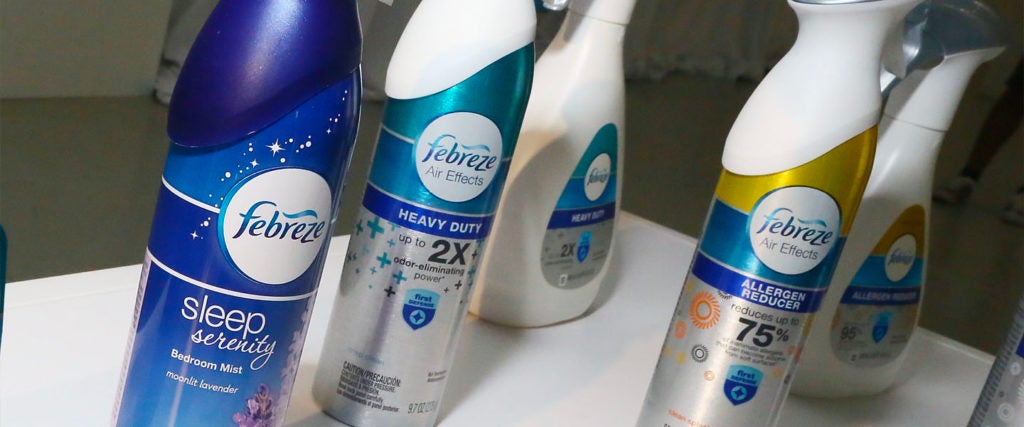If you’re like most guys of a certain age, you’ve likely spent at least a couple of minutes spraying your clothes, couch, countertops and maybe even your dog with Febreze. In the process, you probably thought you’d hacked your way into a method of cleaning that took all of five minutes to complete. After all, your clothes, couch, countertops and good boi didn’t smell like balls afterward.
But how deep was that clean really? Sure, your shirt no longer reeked of B.O., but what about all the bacteria and germs that took up residence there since its last tumble in the washing machine?
Per usual, it’s probably best to start by explaining how Febreze works. As my colleague Ian Lecklitner explained a couple of years ago, the active ingredient in Febreze, a sugar molecule called cyclodextrin, “forms a ring with a hydrophobic (or water-repellent) center. Meanwhile, many odor molecules are also hydrophobic, and since hydrophobic molecules tend to attract each other, the odor molecules are inevitably drawn to the center of the cyclodextrin ring, where they get stuck. Therefore, when you spray Febreze, these odor molecules are no longer floating around in the air — since they’re trapped in that cyclodextrin ring — which means your odor receptors can no longer sense them.”
But does cyclodextrin hide/subvert/eliminate germs, too?
Charles Gerba, a professor of virology at the University of Arizona, tells me that good ol’ regular Febreze can’t, but Febreze Professional can. “Febreze Professional has didecyldimonium chloride, which is antimicrobial,” he explains. What’s more, according to P&G’s website, Febreze Professional kills 99.9 percent of bacteria on soft surfaces as well as “prevents mold growth for up to 14 days” on those same surfaces.
That said, as Gerba has told me in the past, “It takes thousands of bacteria to have any effect, but it only takes one virus.” Which basically means that while Febreze Professional can get straight-up genocidal on bacteria, it’s not necessarily effective at eliminating viruses. To that end, despite Febreze Professional being touted as being capable of eliminating staphylococcus from hospital beds, it’s currently not on the EPA’s list of products that kill COVID.
But again, you’re definitely gonna smell as fresh as whatever Febreze scent you purchased.

